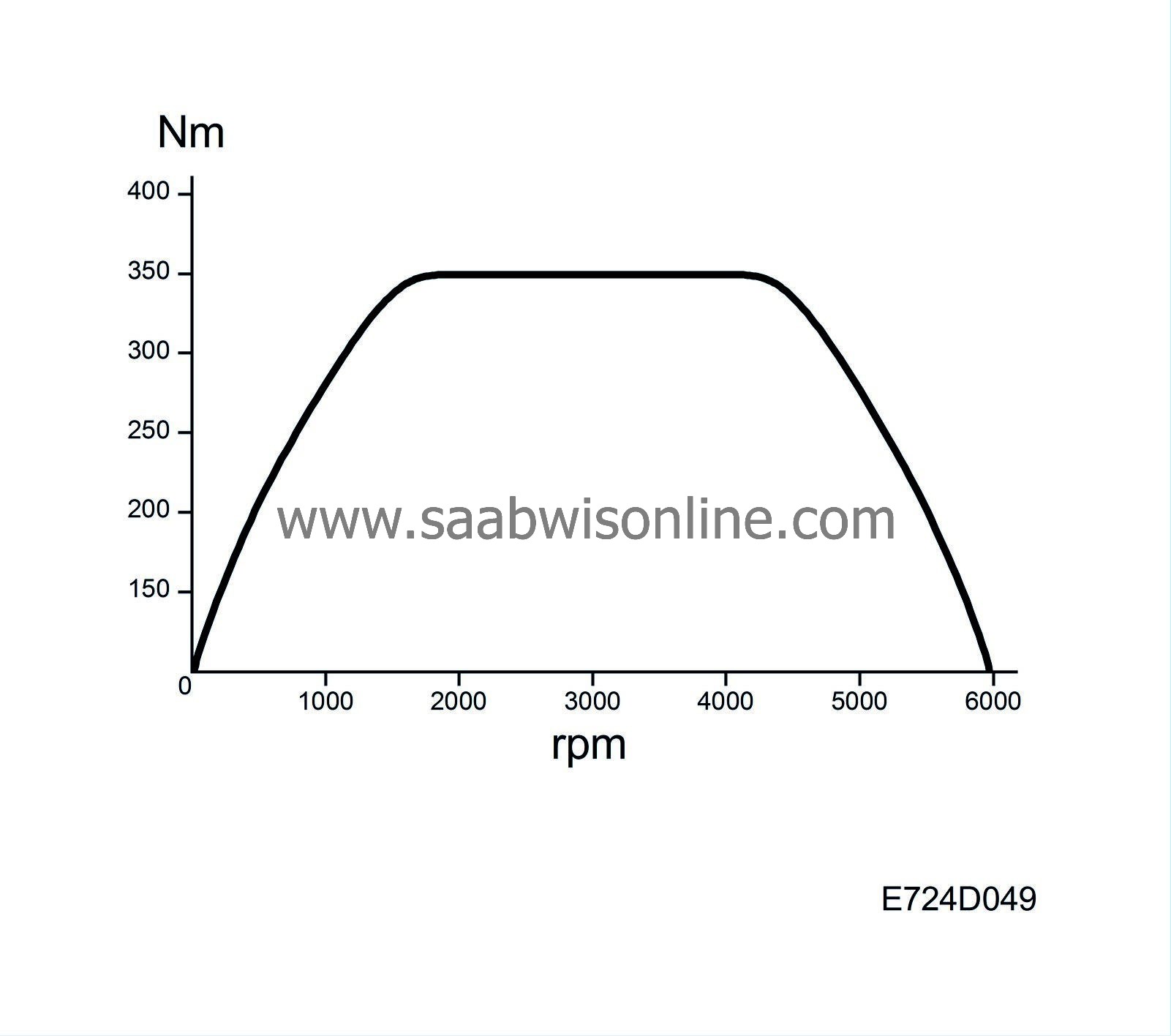Air mass limitation
| Air mass limitation |
| Maximum engine torque |
The engine torque curve is stored in the control module memory. It specifies the maximum engine torque at various engine speeds.
Engine torque is directly proportional to air mass/combustion.
The unit in the engine torque curve, Nm, is converted to mg air/combustion.
The value taken from the curve is the maximum air mass/combustion value the engine variant allows.
| Manual gearbox, engine torque limitation |
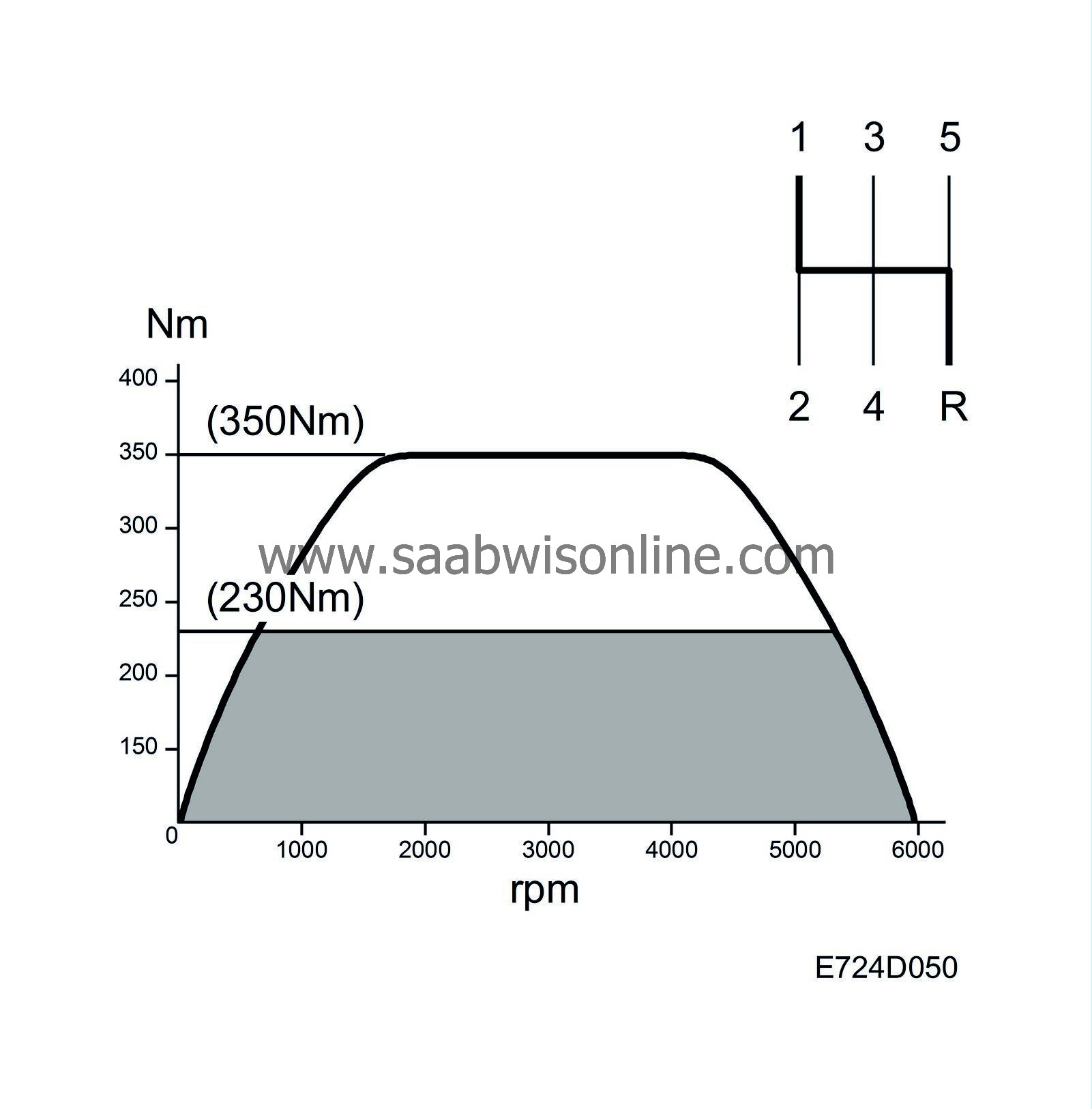
The maximum engine torque must be limited at low gear ratios for reasons of strength.
The control module calculates the engaged gear by comparing engine speed with vehicle speed.
If the gear ratio corresponds with gear 1 or R, the control module reads bus information "Reverse gear selected" from DICE to distinguish between them.
Engine torque is limited to 230 Nm when gear 1 or R is selected. In other gears, the torque is limited to 350 Nm. In 5th gear, there is a limitation that is gradually activate if the engine speed drops below 2000 rpm. This is to prevent vibration. The engine torque value is converted to mg air/combustion and constitutes the maximum air mass/combustion permi tted by the gearbox.
| Automatic gearbox, stall limitation |

The maximum engine torque must be limited when the car is stationary and the brake pedal is depressed for reasons of strength.
Engine torque is limited to 200 Nm.
Engine torque is converted to mg air/combustion and constitutes the maximum air mass/combustion permitted by the automatic transmission.
| Automatic transmission, limitation in reverse gear |
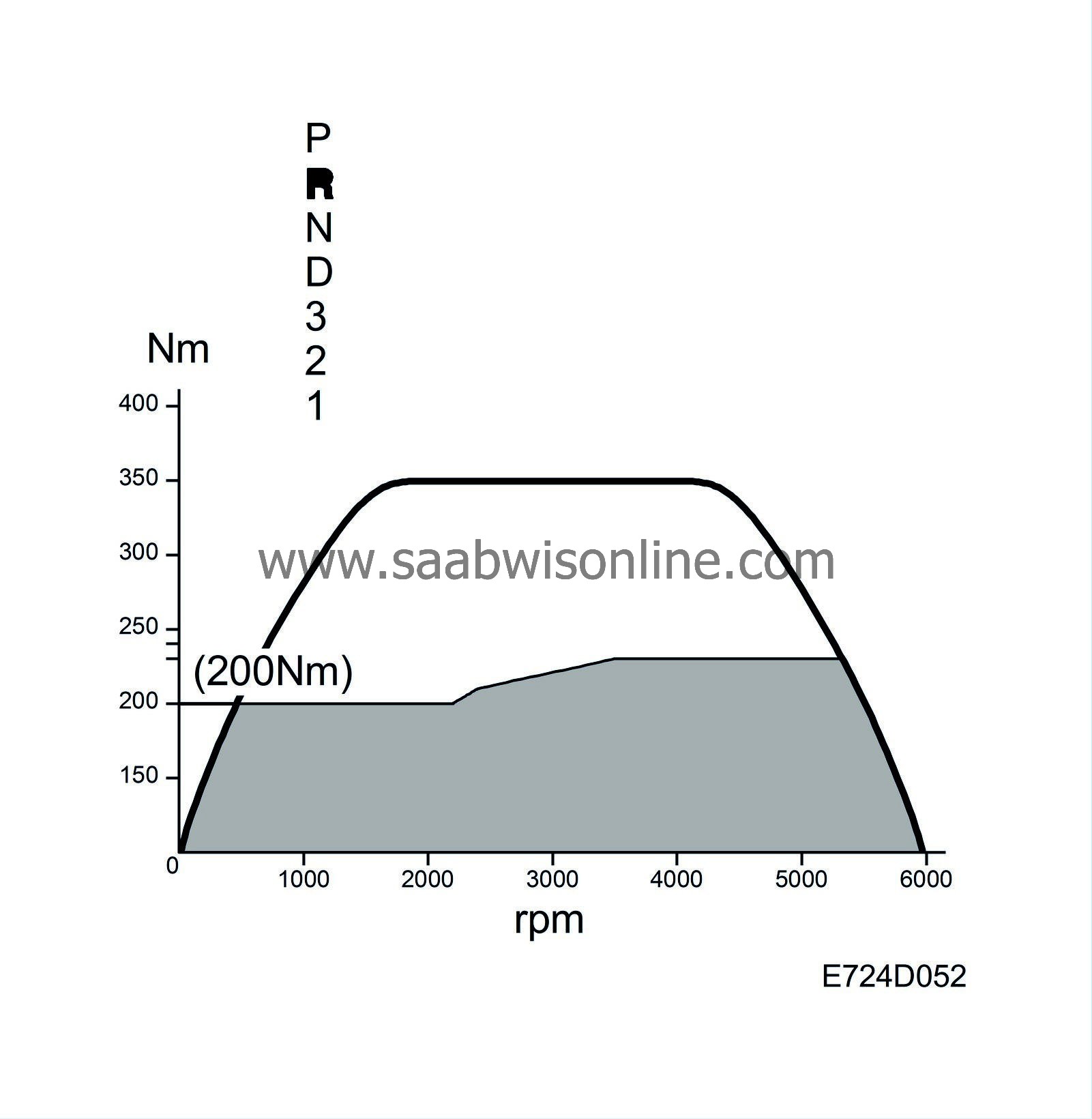
An engine-dependent torque limitation takes place when selector lever position R is selected to reduce the load on the powertrain mountings.
Engine torque is converted to mg air/combustion and constitutes the maximum air mass/combustion permitted by the automatic transmission.
| TCM, engine torque limitation |
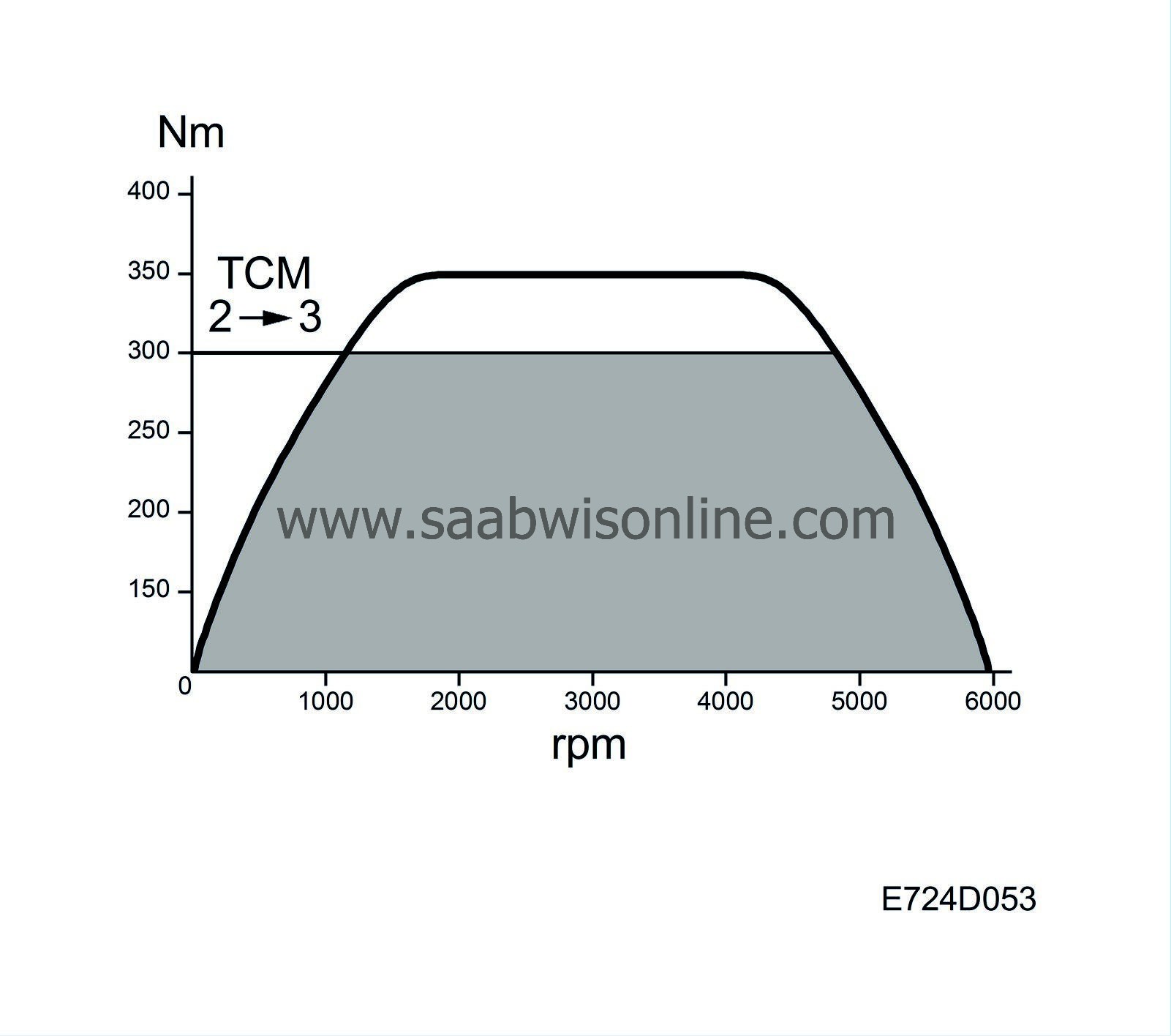
The maximum engine torque must be limited while changing gear for reasons of strength. TCM sends continuous bus information indicating the maximum engine torque.
Trionic T7 converts Nm to mg air/combustion. The value constitutes the maximum air mass/combustion permitted by the automatic transmission.
| Braking |

The maximum engine torque must be limited when the brake pedal is depressed for reasons of strength. The following three conditions must be fulfilled for this function to be activated:
| • |
B+ on the input from brake light switch, pin 63.
|
|
| • |
B+ on the input from brake and clutch pedal switches, pin 29.
|
|
| • |
Brake light ON (Bus from TWICE)
|
|
Engine torque is limited to 200 Nm.
Engine torque is converted to mg air/combustion and constitutes the maximum air mass/combustion permitted by the automatic transmission.
| Traction Control, engine torque limitation |
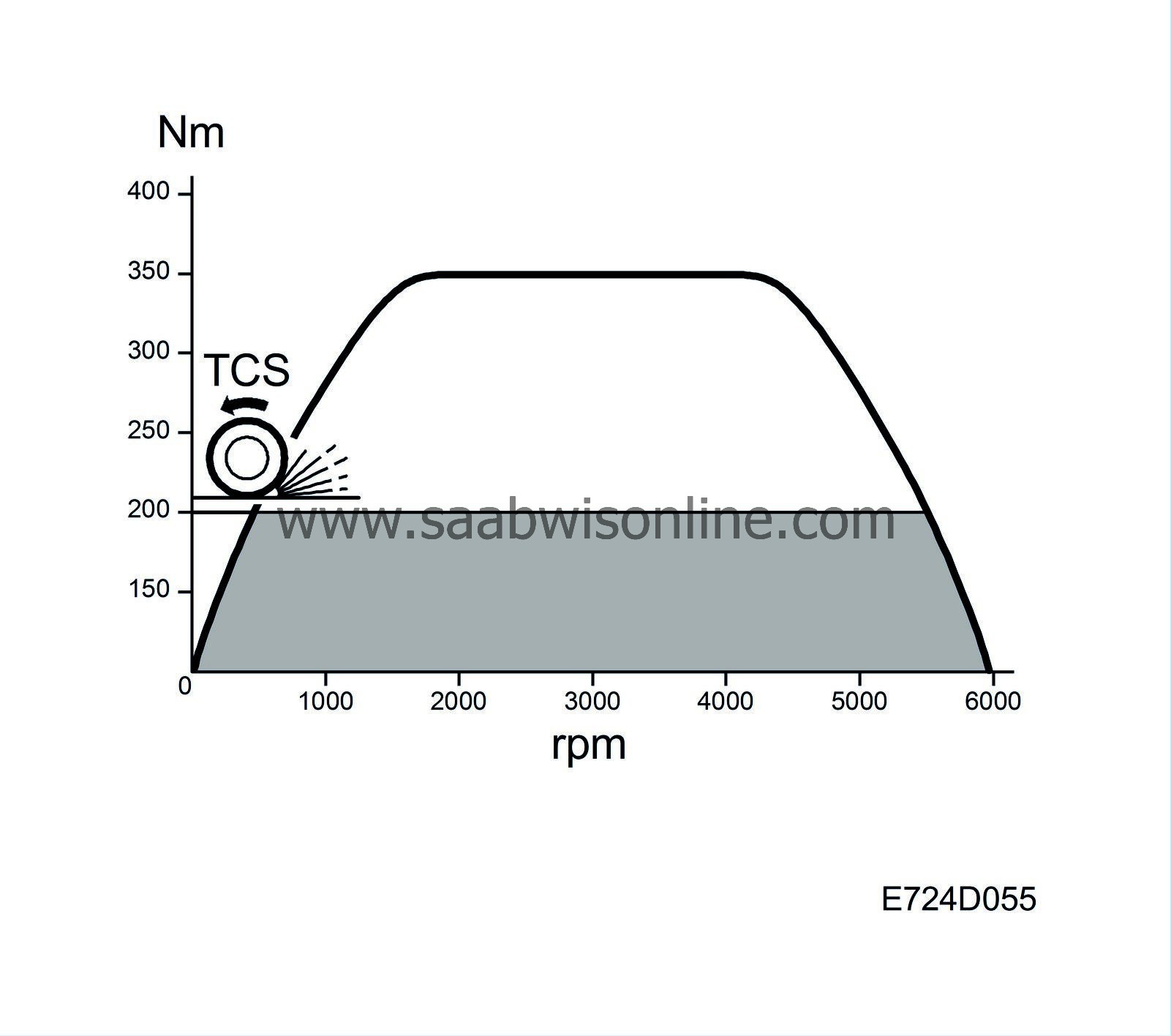
Cars with certain engine variants can be fitted with Traction Control. The Traction Control function is in the TC/ABS control module.
TC/ABS receives three signals from Trionic T7:
| • |
Engine torque, 100 Hz PWM from pin 61 to TC/ABS control module pin 27.
The various pulse ratios have the following meanings: |
|
| - |
5 %: Engine stationary.
|
| - |
9-92 %: Engine running and engine torque between -100 Nm and 410 Nm.
|
| - |
96 %: Trionic has detected a fault that affects the function of TC/ABS (see Diagnostics).
TC/ABS uses the engine torque value to calculate the current drive wheel torque. |
| • |
Pedal position, 8 Hz PWM from pin 14 to TC/ABS control module pin 12.
Three different pedal positions are indicated by different pulse ratios. With the pedal depressed 0-47%, the pulse ratio is 16%, at 47-72% the pulse ratio is 40% and at 72-100% (kickdown) the pulse ratio is 64%. TC/ABS uses the value to determine how much wheel spin to allow. |
|
| • |
Engine speed, frequency modulated signal from pin 28 to TC/ABS control module pin 30.
Trionic grounds the lead twice per crankshaft revolution. TC/ABS uses the value together with vehicle speed to calculate the current gear ratio. With the engine torque and current gear ratio known, TC/ABS can calculate the drive wheel torque. |
|
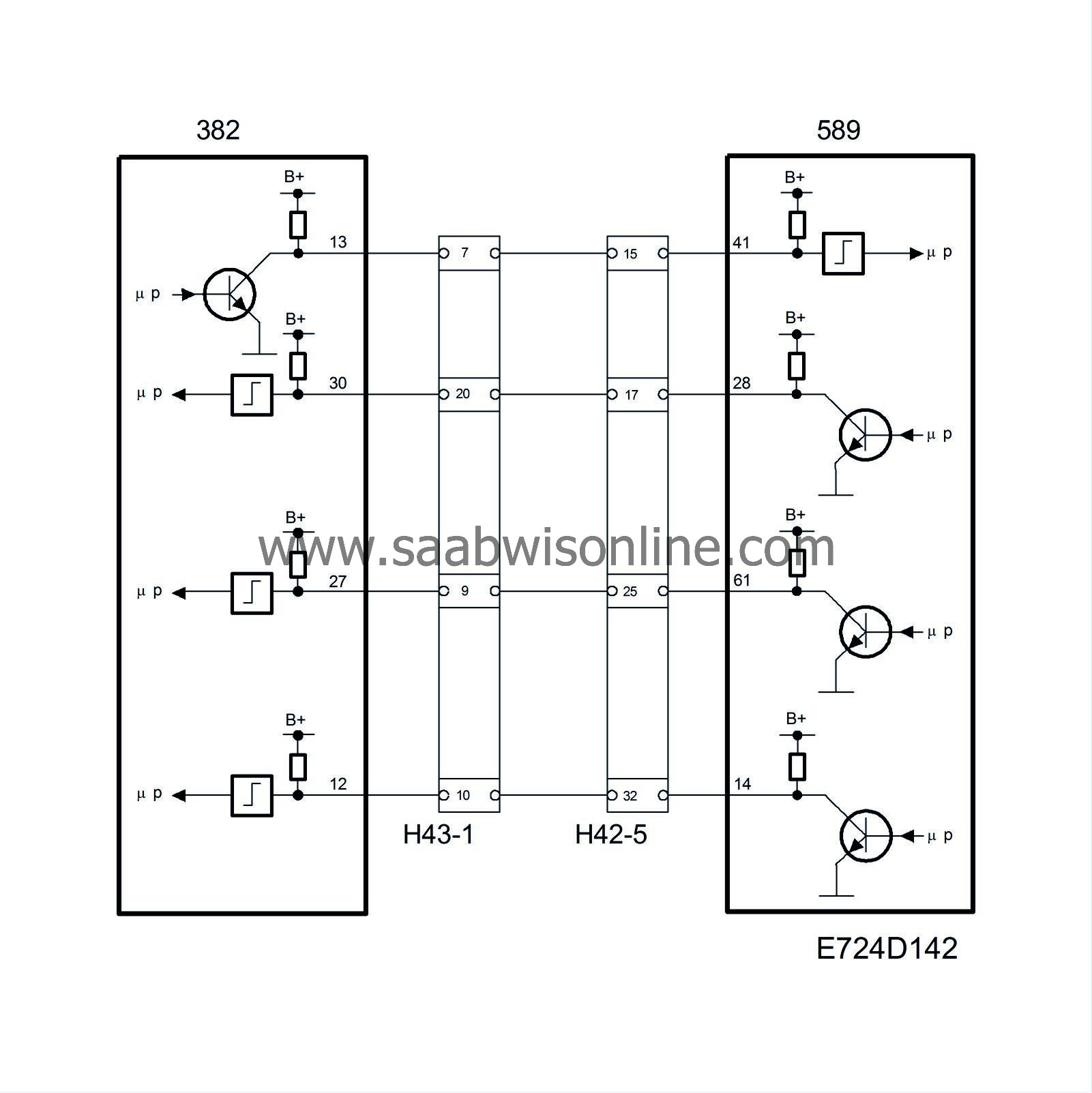

TC/ABS sends one signal to Trionic T7:
| • |
Engine torque limitation, 100 Hz PWM from TC/ABS control module pin 13 to pin 41.
The various pulse ratios have the following meanings: |
|
| - |
88-90%: Increase torque to 10 Nm.
|
| - |
86-88%: Increase torque to 0 Nm.
The two values above are sent if there is wheel slip during engine braking. |
| - |
84-86%: No slip and TC/ABS programmed for V6.
|
| - |
82-84%: No slip and TC/ABS programmed for 4-cyl.
The two values above are sent so that Trionic T7 can determine whether the TC/ABS control module is programmed for the correct engine variant. |
| - |
9-82%: Limit torque to between -100 and 350 Nm
Trionic T7 converts Nm to mg air/combustion. The value constitutes the maximum air mass/combustion value permitted by TC/ABS. |
| Diagnostics |
Trionic can detect three different faults that affect the TC function. Trionic then sends 96% pulse ratio as an engine torque signal to inform TC/ABS, which then generates a diagnostic trouble code and turns on TCS OFF. The three faults are:
| • |
Trionic is not receiving pulses on the lead for engine torque limitation when the ignition is on (open circuit or short circuit in the lead).
|
|
| • |
Trionic detects that TC/ABS is programmed for the incorrect engine variant (programmed variant sends from TC/ABS on the lead for engine torque limitation).
|
|
| • |
Fault in the Trionic throttle control (limp-home). With this fault, the CHECK ENGINE lamp will also go on and the cause of the fault can be found in Trionic.
|
|
| Note | ||
|
No diagnostic trouble codes or fault symptoms can occur in Trionic due to a fault in TC/ABS or in the leads between the control modules. |
||
|
ABS is not affected by faults in the leads between the control modules. |
||
|
Tip: If the ABS lamp is on then TCS OFF is also on and the fault is in TC/ABS. If only TCS OFF is on, the fault is probably in the leads between the control modules. If CHECK ENGINE and TCS OFF are on then the throttle is probably in limp-home mode. |
| Knock limitation |

Knock control first retards the ignition timing for each cylinder. If the mean value for the ignition retardation for all the cylinder exceeds a certain value, fuel enrichment will take place.
If the mean value for ignition retardation increases further, the maximum permissible air mass/combustion will be reduced.
This reduction takes place continuously as the ignition retardation increases.
The value constitutes the maximum air mass/combustion value permitted by knock control.
| Vehicle speed limitation |
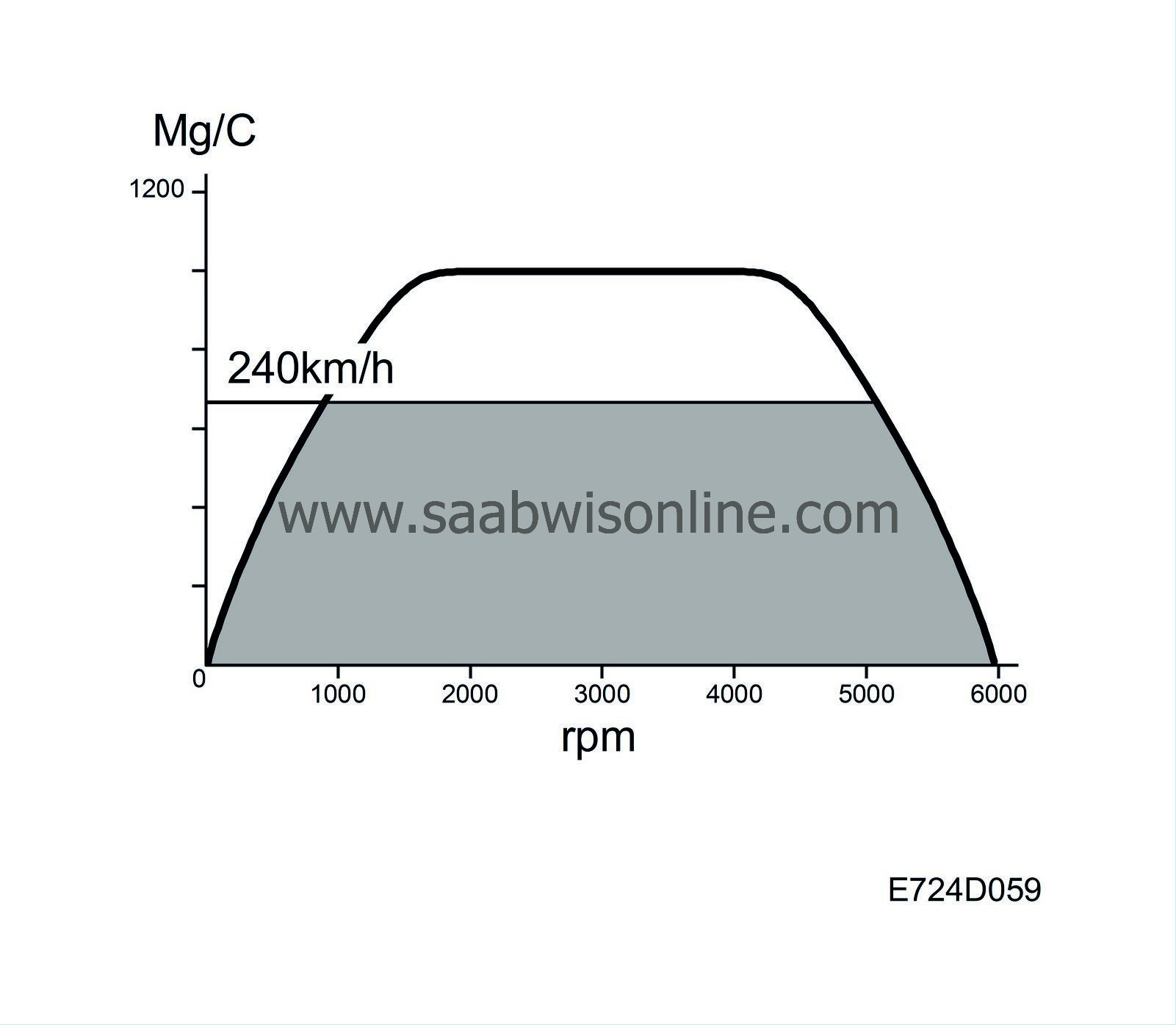
When the vehicle speed reaches 240 km/h, the engine torque is limited by limiting the maximum permissible air mass/combustion.
| Engine speed limitation |
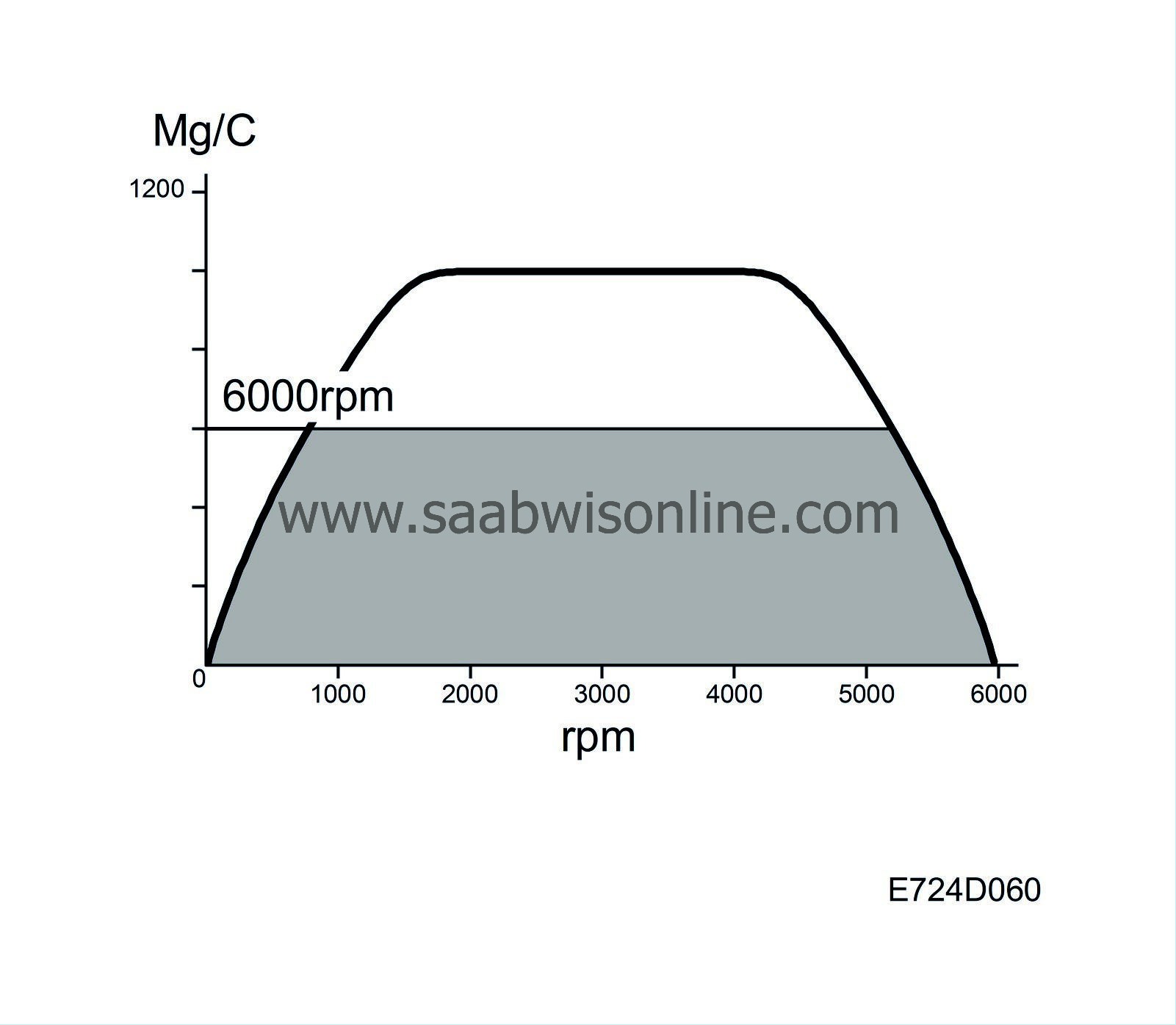
When the engine speed reaches 6000 rpm, the engine torque will be limited by limiting the maximum permissible air mass/combustion.
| Turbo speed limitation |
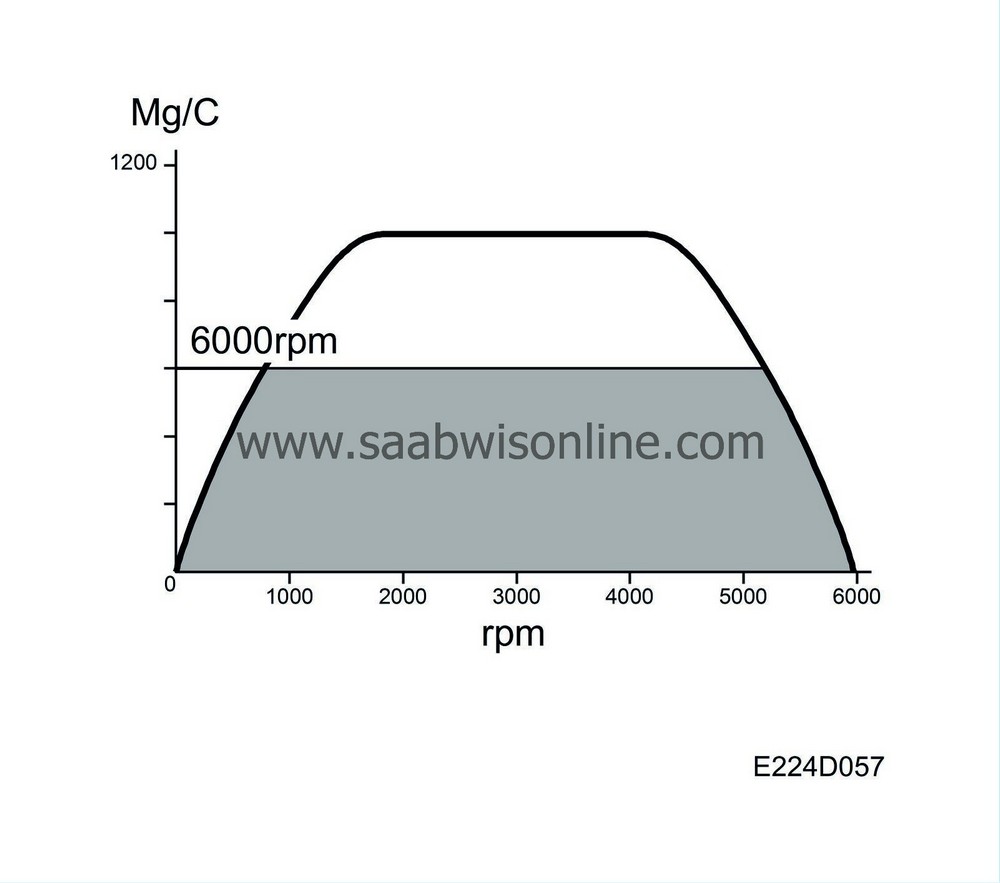
The maximum permissible air mass/combustion is limited at low atmospheric pressures to protect the turbo from overrevving.
| Limitations after system faults |
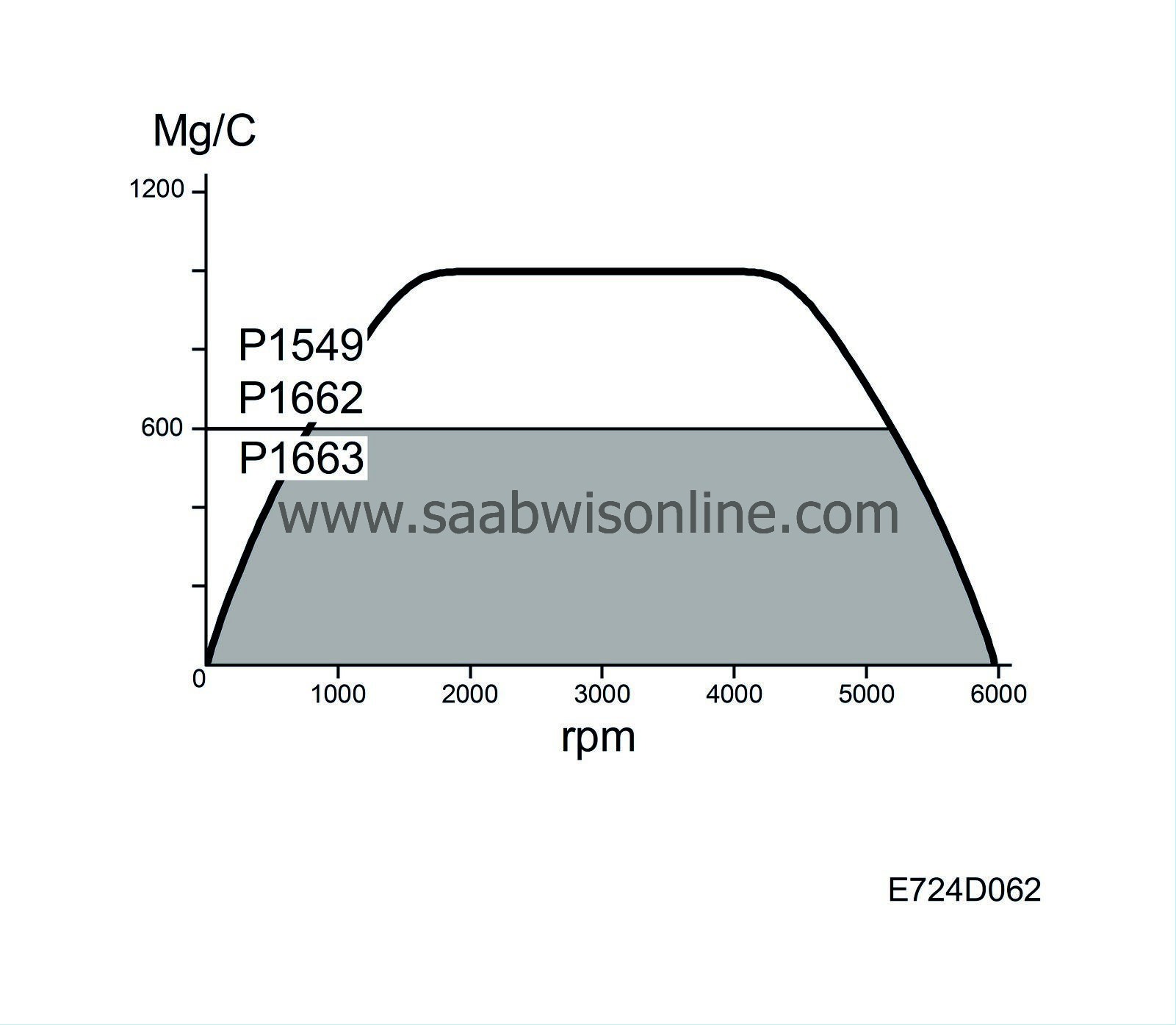
The maximum permissible air mass per combustion is limited in the following cases:
| • |
Electrical fault in the charge air control valve
|
|
| • |
Mechanical fault in the charge air control valve causing the current air mass to exceed that requested.
|
|

